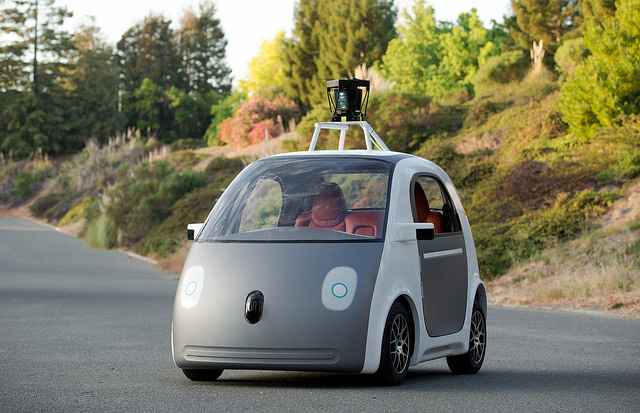Driverless Cars: What Impact Will They Have On Our Environment?

We already know that driverless cars are poised to save the motorist of tomorrow from many of the hassles we now encounter in our daily travel. By 2030 to 2040, when these vehicles are expected be commonplace, traffic jams, accidents and even asking for directions will be much rarer occurrences. These vehicles will not only save us time and injury; they should save resources as well.
While there are ways we can use less fuel in our everyday driving, driverless cars are simply much better at it. Automation may also contribute to resource conservation beyond greater fuel efficiency, including cutting down on the amount of material needed to build a car and the amount of road and parking space required.
However, how we humans use these vehicles could just as easily lead to our future automobiles making a larger rather than a smaller negative impact on our environment. Our use of the technology will ultimately determine its impact.

First, the positive factors. Driverless cars are controlled by a series of sensors and software connected at many different points to the vehicle’s mechanical systems, not just at the relatively few interaction points where the typical human driver connects with the vehicle such as the accelerator, brake, steering wheel and gear shifter. These automated controls respond to input instantaneously, unlike the comparatively slow response time with a human input that begins in the brain, travels to the muscle which manipulates the control mechanism, say the accelerator, which must then interact with the fuel system to regulate the flow to the engine.
With computerized electronic control, the “brain” is interacting with both the street environment and the throttle directly, predicting the need for acceleration and the potential for needing to slow or stop and then enabling just the right amount of fuel to the engine at just the right time, eliminating any unnecessary fuel usage.
Additionally, the driverless vehicle’s sensor array is in constant contact with other vehicles in the same area, coordinating movements to avoid the stop-and-go traffic conditions and consequent fuel waste that results when too many cars are competing for the same road space at the same time. Imagine merging smoothly into a lane of heavy traffic while maintaining a uniform speed or traveling safely through intersections without the need to stop and restart.
These are situations in which the driverless car not only provides a smoother ride but also reduces the amount of wasted energy that results from your trip. The vehicle’s awareness of surrounding vehicles also enables cars traveling in the same direction on the road to safely follow each other very closely, resulting in less drag and greater fuel efficiency. Sensors and map awareness in the vehicle’s software will also choose the most efficient route to your destination, another potential fuel saver.
Since the average car spends 96% of the time sitting idle, many predictions for the driverless car era include fewer of us owning cars, instead relying on shared vehicle services. This should cut down on the number of vehicles produced and the amount of space needed for large parking areas which trap heat in urban areas. Even with less car sharing, each individual driverless car will require less material to build. The greater safety of the automated system takes away the need for safety enhancements that add both material and weight to the cars we drive today.
All of this looks promising for the environment. However, it may not be that simple. Safer, more fuel-efficient cars that let you sit back and relax, work, or be entertained might makes us want to take more and longer trips in our cars. We might live farther from their jobs, creating longer trips and cancelling out any fuel savings gained through better efficiency. We might not see a drastic decline in the rate of vehicle ownership. We might even see an increase as those who are currently unable to drive a car will be able to use a driverless one. While there are many reasons to be optimistic about the coming revolution in automotive technology, a better future for our environment may not be one of them.
